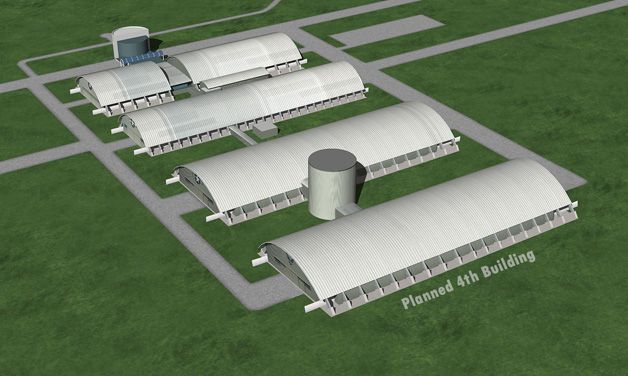Air Force museum plans major expansion

The National Museum of the U.S. Air Force is adding a 224,000-square-foot building that will open in 2015.
The contract for the museum’s newest building, which will be similar in size and shape to its three existing hangars, was awarded by the U.S. Army Corps of Engineers, Louisville District, for $35.426 million, and is being privately financed by the Air Force Museum Foundation, a non-profit organization chartered to assist in the development and expansion of the museum’s facilities.
Construction is to begin in spring 2014 and finish in summer 2015 with a public opening is anticipated in late 2015, according to a press release.
The new building will provide more educational opportunities, increase visitor access to the presidential and research and development aircraft, and improve visitor experience with space exhibits and large aircraft, said Lt. Gen. (Ret.) Jack Hudson, museum director.
“We’re extremely excited about the fourth building because this new facility will help us to further tell the Air Force story with much needed exhibit space and also provide dedicated educational areas for programs based in science, technology, engineering, and mathematics (STEM),” said Hudson. “There will be opportunities for visitors of all ages, but a special emphasis will be placed on programs that inspire and motivate our youth toward an Air Force or STEM career.”
The new addition will focus on four major elements of the Air Force story:
The Presidential Aircraft Gallery will allow the museum to relocate and expand one of its most popular galleries, currently located on a controlled-access portion of Wright-Patterson Air Force Base and accessible by bus to a small percentage of museum visitors. The fourth building will provide all visitors the opportunity to view this historic collection of presidential aircraft, and walk through four of them, including aircraft used by Presidents Roosevelt, Truman, Eisenhower as well as the Boeing VC-137C used by President Kennedy, also known as SAM (Special Air Mission) 26000 which carried his body back to Washington, D.C. from Dallas after his assassination on Nov. 22, 1963, and served as the location where President Lyndon B. Johnson was sworn in as the new president.
The Research and Development Gallery will also to be relocated from the base and offer visitors the opportunity to view the world’s only remaining XB-70 and other aerospace vehicles. The exotic XB-70 could fly three times the speed of sound and was used as a research aircraft for the advanced study of aerodynamics, propulsion and other subjects. Research and development aerospace vehicles represent advances in technological problem solving and will increase the museum’s opportunities to teach STEM themes and principles.
The new Space Gallery will showcase the space shuttle exhibit featuring NASA’s first Crew Compartment Trainer (CCT-1), a high-fidelity representation of a space shuttle crew station used primarily for on-orbit crew training and engineering evaluations. As a major exhibit component of that gallery, visitors will be able to walk onto a full-size representation of a NASA space shuttle payload bay and look inside the CCT-1 cockpit and mid-deck areas. Conceptual plans call for the gallery to also include a Titan IV space launch vehicle, Mercury, Gemini and Apollo spacecraft and many NASA artifacts such as a nose cap assembly, landing gear strut and a variety of astronaut equipment. A range of satellites and related items will showcase the Air Force’s vast reconnaissance, early warning, communications and other space-based capabilities.
Providing airlift remains a major mission of the USAF, and it forms a critical part of the Air Force’s ability to maintain global reach. The Global Reach Gallery will give the opportunity to house large aircraft currently in the museum’s collection, such as the C-141 Hanoi Taxi, which airlifted the first American POWs to freedom from Hanoi, North Vietnam in 1973. The Air Force’s airlift, aeromedical and evacuation missions will also be explained in this gallery.
The Air Force Museum Foundation recently gifted the funds necessary to begin construction of the building and will continue fundraising toward its campaign goal of $46 million, which would provide additional options and amenities for the building.
The National Museum of the United States Air Force, located at Wright-Patterson Air Force Base near Dayton, Ohio, is the service’s national institution for preserving and presenting the Air Force story from the beginning of military flight to today’s war on terrorism. It is free to the public and features more than 360 aerospace vehicles and missiles and thousands of artifacts amid more than 17 acres of indoor exhibit space.

